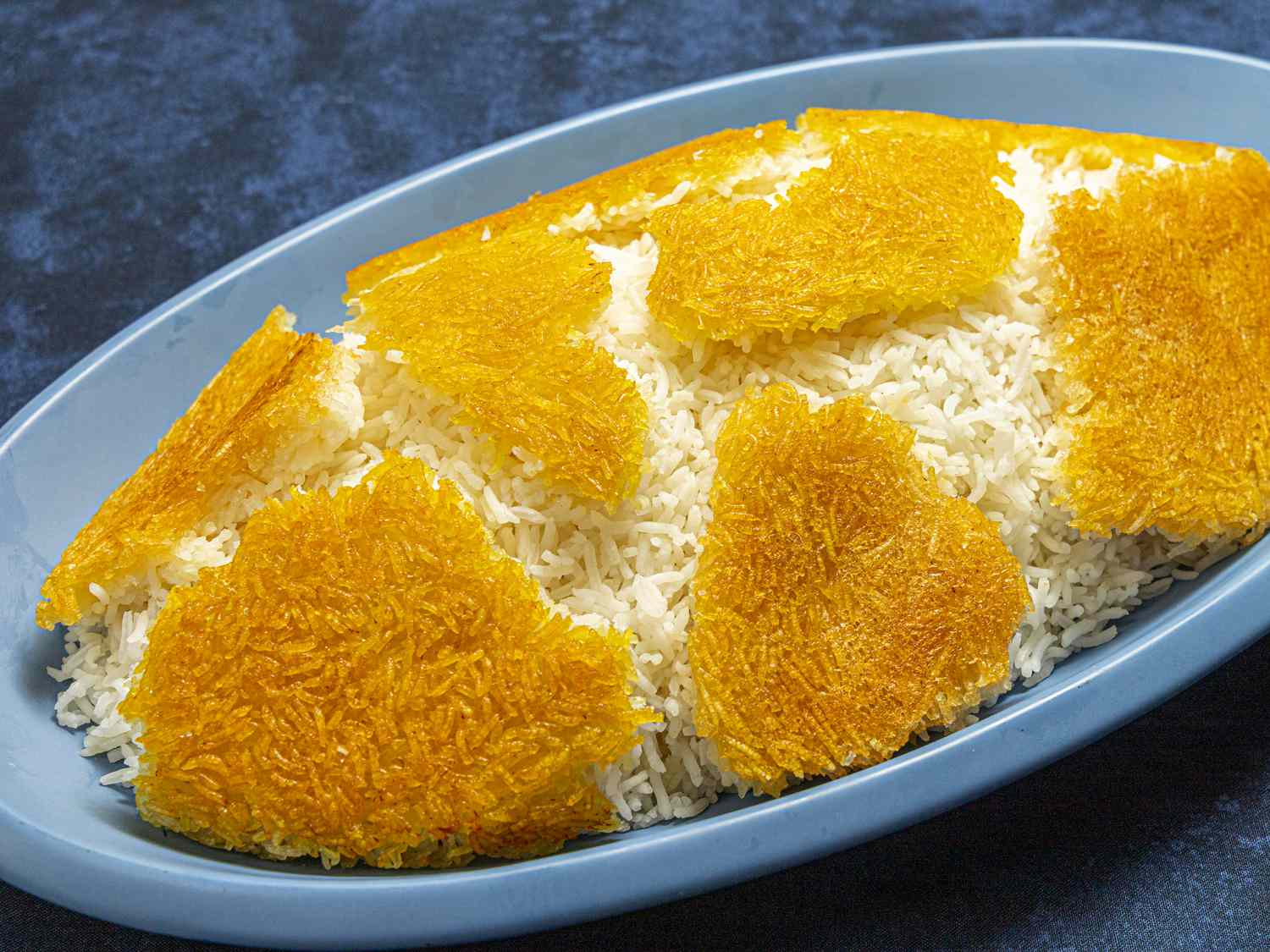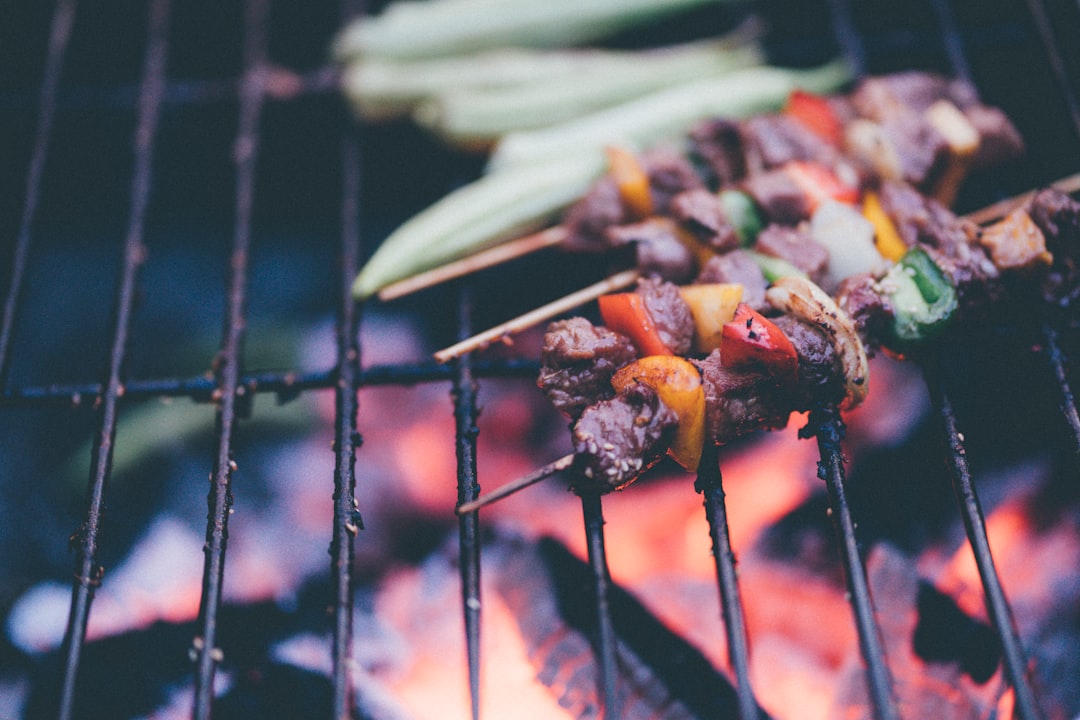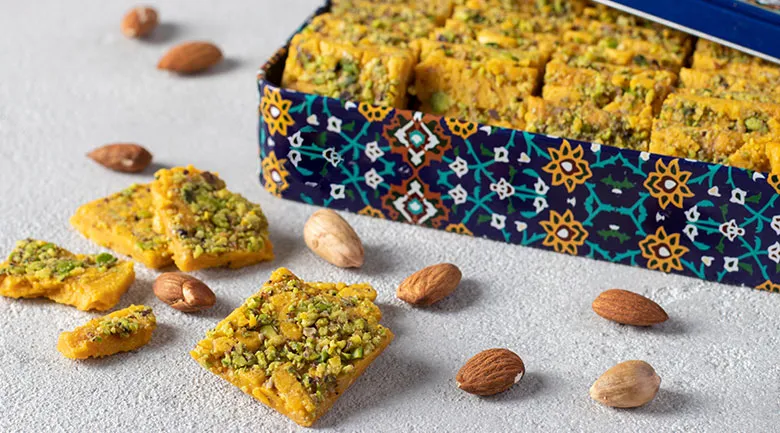If you’ve ever had the pleasure of dining in a Persian household or at an Iranian restaurant, you’ll know that rice plays a central role in nearly every meal. Persian cuisine is renowned for its variety and complexity, but there’s one thing that stands out above all else—the art of rice cooking, particularly the delicious and coveted tahdig (crispy rice).
Rice isn’t just a side dish in Persian cooking; it’s the centerpiece of many meals, often served in towering mounds with a golden crust of tahdig at the bottom. So, what makes Persian rice and tahdig so special, and how can you recreate this culinary magic in your kitchen? Let’s dive in!
🍚 The Importance of Rice in Persian Cuisine
In Iran, rice is more than just a staple food—it’s a symbol of hospitality, tradition, and the essence of Persian cooking. Known as "polo" in Persian, rice is the base of many classic dishes, from Chelow Kebab to Fesenjan and Ghormeh Sabzi. But what sets Persian rice apart from other rice dishes around the world is the cooking technique and the quest for the perfect tahdig.
Persian Rice: The Technique Behind the Perfection
-
Rice Quality: Persian rice is often long-grain, with varieties like Basmati and Saman being the most popular. These grains have a distinct fragrance and are known for their ability to remain fluffy and separate after cooking—key features of Persian-style rice.
-
Rinsing: Before cooking, Persian rice is rinsed several times to remove excess starch. This ensures the rice remains light, fluffy, and non-sticky after cooking.
-
Parboiling: One of the most crucial steps in making Persian rice is parboiling. The rice is first partially cooked in boiling water for about 7-10 minutes, then drained and rinsed in cold water. This technique helps to achieve the ideal texture—soft, yet firm enough to hold its shape.
But even more important than the cooking process is the creation of tahdig, which is the crispy, golden layer of rice at the bottom of the pot that everyone fights over!
🍽 Tahdig: The Crispy, Golden Treasure
Tahdig is a Persian culinary masterpiece that elevates the humble rice dish into a work of art. It’s a combination of rice, butter, and sometimes yogurt, saffron, or even thinly sliced potatoes—all pressed down in the pot to create a rich, golden crust. The result is a crispy, golden layer that contrasts beautifully with the soft, fluffy rice above it.
The Magic of Tahdig
-
Texture: Tahdig is crunchy, golden-brown, and often slightly chewy, creating a delightful contrast with the tender rice. It has a flavor that’s slightly buttery and savory, with a hint of saffron when added.
-
The Perfect Press: To get the perfect tahdig, the rice must be pressed down gently once it’s been parboiled and layered back into the pot. The heat must be moderate—not too high, or the rice will burn; not too low, or the tahdig will not form properly.
Variations of Tahdig:
-
Classic Tahdig: The most traditional version is made with just butter and rice, resulting in a simple yet delicious golden crust.
-
Potato Tahdig: Thinly sliced potatoes are arranged at the bottom of the pot, absorbing the flavors of the rice and forming a crispy, slightly chewy layer.
-
Yogurt Tahdig: A layer of yogurt and saffron mixed with rice is placed at the bottom, creating a unique tangy and crispy crust.
-
Bread Tahdig: Some variations use a thin layer of flatbread (like lavash) at the bottom of the pot to create an even crunchier layer.
🧑🍳 Making Persian Rice with Tahdig at Home
While the process may seem a little intimidating at first, making Persian rice with tahdig at home is entirely doable with a little practice. Here’s a simple guide to help you get started:
Ingredients:
-
2 cups of long-grain basmati rice
-
4 cups of water
-
3 tablespoons of unsalted butter or ghee
-
2 tablespoons of yogurt (optional, for yogurt tahdig)
-
A pinch of saffron (for the golden color and fragrance)
-
Salt to taste
Instructions:
-
Rinse the Rice: Begin by rinsing the rice under cold water until the water runs clear. This removes excess starch and helps the rice cook evenly.
-
Soak the Rice: Soak the rice in water for 30 minutes to an hour, allowing the grains to soften.
-
Parboil the Rice: Bring a large pot of salted water to a boil, then add the soaked rice. Cook for about 7-10 minutes, until the rice is still firm but partially cooked. Drain the rice and set it aside.
-
Prepare the Tahdig:
-
In the same pot, melt butter or ghee over medium heat. For yogurt tahdig, mix a few spoonfuls of yogurt and saffron into some of the parboiled rice, and spread it evenly at the bottom of the pot.
-
If using potatoes, layer thin slices at the bottom of the pot and drizzle with some butter before layering the rest of the rice on top.
-
-
Layer the Rice: After preparing the tahdig, gently layer the rest of the parboiled rice on top. Use the back of a spoon to create a cone shape in the center to allow steam to escape and cook the rice evenly.
-
Steam the Rice: Cover the pot tightly with a lid. Reduce the heat to low and let the rice steam for about 40-45 minutes, ensuring the rice is fully cooked and the tahdig has formed a crisp golden layer at the bottom.
-
Serve and Enjoy: To serve, gently invert the pot onto a large plate or dish. The tahdig should come out in one beautiful, golden layer, ready to be served alongside your favorite Persian dishes!
🍴 Why Tahdig is So Special
Tahdig is more than just a crispy layer of rice. It’s a symbol of hospitality and love in Persian culture. The person who prepares the meal will often offer the tahdig to guests as a sign of honor, as it is considered the most coveted part of the meal. In some families, the search for the perfect tahdig is almost a tradition itself, with each attempt to create it a matter of pride.
Tahdig is often served as part of a larger spread, accompanying everything from kebabs and stews to poultry and vegetable dishes. Its crisp texture and rich flavor pair perfectly with the aromatic, fluffy rice and the complex, savory dishes it accompanies.
🍽 Conclusion: The Heart of Persian Cooking
Rice and tahdig are the soul of Persian cuisine. The process of cooking the perfect rice, the art of creating a golden, crispy tahdig, and the joy of sharing these dishes with loved ones encapsulate the warmth, hospitality, and intricate flavors that define Persian cooking. Whether you’re cooking it for a special occasion or a regular family meal, rice and tahdig are at the heart of every Persian kitchen.
Next time you find yourself craving Persian food, don’t forget to pay attention to the rice. After all, a dish is only complete when you have that perfect golden layer of tahdig—crispy, buttery, and oh-so-delicious!





